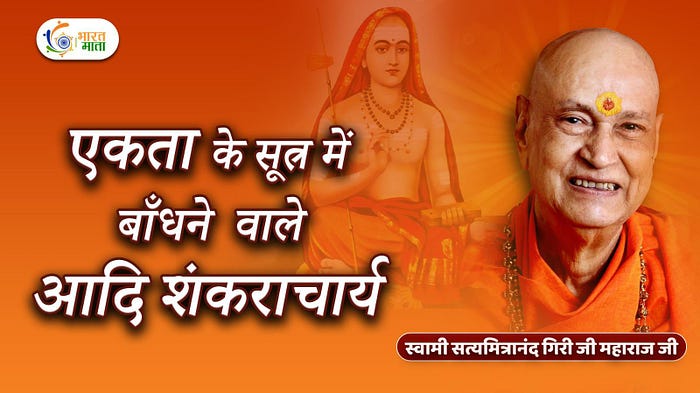Swami Satyamitranand Giri Ji Maharaj Pravachan - The Untold Story of Adi Shankaracharya
In one of his enlightening pravachan series, Swami Satyamitranand Giri Ji Maharaj shared a divine story that reveals how the great philosopher Bhagwan Adi Shankaracharya became a symbol of wisdom, unity, and devotion in Bharat.

According to Maharaj Ji, Shankaracharya was no ordinary child — he was extraordinarily brilliant, radiant, and spiritually awakened. Even as a young boy, he carried in his heart a deep desire for the welfare of the world. Yet, his mother did not wish for him to renounce worldly life.
The Moment That Changed Everything
One morning, while bathing in the river, young Shankaracharya did not return for a long time. Worried, his mother ran to the riverbank — only to find him standing still in the water, lost in deep meditation. Suddenly, he cried out, “Mother! A crocodile has caught my leg! It says it will release me only if you allow me to take sannyas (renunciation)!”
Moved by his plea and divine circumstance, his mother tearfully said, “Alright, my son, I give you permission to renounce.”
The crocodile immediately released him — and thus, at just seven years old, Shankaracharya became a monk.
From that moment, destiny took a new turn — not just for him, but for the entire spiritual landscape of India.
The Journey of a Saint
Within a year, he had memorized all four Vedas, and by the age of eight, he began writing commentaries on ancient scriptures. By sixteen, he had composed profound works on the Upanishads, Brahma Sutras, and Mimamsa philosophy.
Later, he traveled to Omkareshwar, where his Guru Govindapadacharya formally initiated him into sannyas, giving him the title “Shankaracharya.”
A Vision to Unite Bharat
At the tender age of sixteen, Shankaracharya made a solemn vow — to unite Bharat through spiritual and cultural awakening.
During that era, society was deeply influenced by Buddhist philosophy, and the ancient Vedic Dharma was fading. Traveling across India, Shankaracharya revived Advaita Vedanta, reminding people that the divine exists within every being — that Atman is Brahman.
Swami Satyamitranand Ji beautifully explained:
“True power is never loud. It shines through one’s karma.”
Just as Ramakrishna Paramhansa once told Vivekananda — “Be like a lotus blooming in society; bees will come to you on their own,” — Shankaracharya lived that truth. He believed that when an individual refines his own life with discipline, wisdom, and devotion, the whole nation is uplifted.
The Eternal Message
As Maharaj Ji said, “Man’s nature flows downward like a river — it needs discipline and devotion to rise upward.”
Just as engineers build dams to channel the river’s energy into light, when the mind and senses are harnessed through bhakti (devotion), inner peace and divine illumination emerge.
Through his teachings, Adi Shankaracharya became the spiritual force that bound India together — in faith, wisdom, and self-realization.
To explore more inspiring pravachans and cultural stories, visit
👉 Bharat Mata Online
👉 Pravachan Section
Watch this story on our YouTube Channel — Bharat Mata Online
Comments
Post a Comment